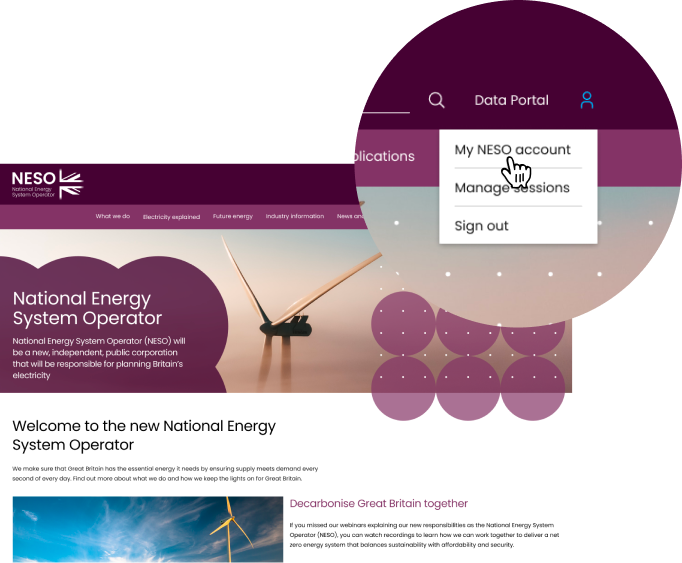Enduring Cross Border Balancing
Project summary
Post-BREXIT, with the UK leaving the EU, the UK is no longer able to join TERRE (Territory, Energy & Employment) and MARI (Manually Activated Reserves Initiative) platforms which enabled the exchange of balancing energy with different lead times and different products.
| Name | Status | Project reference number | Start date | Proposed End date |
|---|---|---|---|---|
| Enduring Cross-Border Balancing | Complete | NIA2_NGESO030 | Sep 2022 | Oct 2023 |
| Strategy theme | Funding mechanism | Technology | Expenditure | Third Party Collaborators |
|---|---|---|---|---|
| Flexibility and commercial evolution | NIA_RIIO-2 | Commercial, Modelling | £200,000 | FTI Compass Lexecon |
The Trade Cooperation Agreement instructs the UK to create a GB cross-border balancing market. This project is the first step in exploring the possibilities and implications associated with the introduction of a new balancing market in GB, able to interact with EU balancing markets. This modelling will explore the three proposed market models and create a CBA (Cost Benefit Analysis) for each one. BEIS would like to take the results to the Special Committee of Energy.
Benefits
Not required.
Outcomes
The report highlighted the 6 options which were then scored against 6 eligibility criteria. These options were:
- A market before TERRE/MARI: activation in the UK Cross Border Balancing platform before having to submit bids for TERRE/MARI where Bids retained in the UK Cross Border market cannot participate in the TERRE/MARI platforms.
- Parallel Markets – BSP choice: BSP’s choose to participate in the UK CBB or local platforms operating in parallel. Bids submitted on a market cannot participate in the other market.
- Parallel Markets – TSO Allocation: EU SO’s and the ESO choose to offer/demand balancing between UK Cross Border Balancing or local platforms operating in parallel. TSO’s have the possibility to re-allocate the local bids depending on their anticipations.
- Indirect participation to EU Platform: the ESO aggregates the UK bids/offers/needs and allocate them across the different frontiers. The resulting exchanges are allocated to the EU platforms for a unique clearing phase.
- TSO directly nominate IC (ICs in the BM): SO’s directly exchange balancing products with each other. They may share bids of different characteristics and activate those which respond to their needs at minimum costs. If the SO-SO request is accepted, the SO can either wait for the next auction to rebalance, either activate l local resources (if legally/contractually possible).
- “Volume Coupling” -Like: The UK platform simulates the EU platforms’ clearing at the UK+EU level and optimises exchanges between UK and EU. The resulting exchanges are allocated to the EU platforms for a second clearing phase.
The scoring criteria were developed as follows:
- Economic Efficiency: considering economic welfare, impact on overall market signals and impact on liquidity and competition.
- Security of supply: the SO’s should have access to sufficient resources to stay balancing in very short timeframes.
- Operational Complexity: considering operational impact, robustness to changes and adaptation costs.
- Acceptability: reviewing distribution of costs and benefits for stakeholders and acceptability for neighbouring countries/TSOs when considering required changes in the regulatory framework.
- Contribution to the energy transition: such as C02 emissions.
These options were then narrowed down to three to be modelled whilst considering the trade-off between welfare and complexity. The three are.
- Option One: A market before TERRE/MARI
- Option Three: Parallel Markets – TSO Allocation
- Option Five: TSO directly nominate IC.
When modelled Option Three and Five were the most adequate regarding system security, complexity and acceptability however cost savings across all connected regions and Switzerland were not positive.
Option One has a risk of high imbalance due to earlier intra-day gate closure time, if this was delayed then numerous operational changes would be required which impacts on the acceptability criteria. The main obstacle of this option is the operational implications as the ID GCT would need to be anticipated which would be complex and detrimental to the overall efficiency of the market. This option also had the potential for negative net benefits for the energy transition when set against certain sensitivities.
Option Three requires lower complexity but the modelling shows limited economic benefits which may be negative in certain circumstances and are dependent on the learning process of the TSO’s.
Option Five has a limited impact on existing markets both in terms of security of supply and operationally however its actual benefits would depend on the actual use of the cross-border balancing platform by the TSO’s. It is possible the modelling results overestimate the benefits as it does not fully reflect the technical characteristics and needs which may lead to a situation of low benefits compared to high implementation costs.
None of the modelled options added end consumer benefits so we will not be proceeding to an implementation stage at this time. This was agreed with DESNZ and OFGEM and shared with industry in the webinar on 19th October 2023.
Lessons Learnt
There has been one modification to the project plan. The Webinar was originally planned for April 2023, however the ESO requested this be moved to Autumn 2023. This delay was agreed with both Ofgem and the Department for Energy Security and Net Zero (DESNZ).
| Name | Published |
|---|---|
| Enduring Cross Border Balancing Final Report | 8 Feb 2024 |
| NIA2_NGESO030 Close Down Report | 8 Feb 2024 |
| NIA2_NGESO030 Annual Progress Report | 26 Jul 2023 |
| NIA Project Registration and PEA Document | 30 Aug 2022 |
